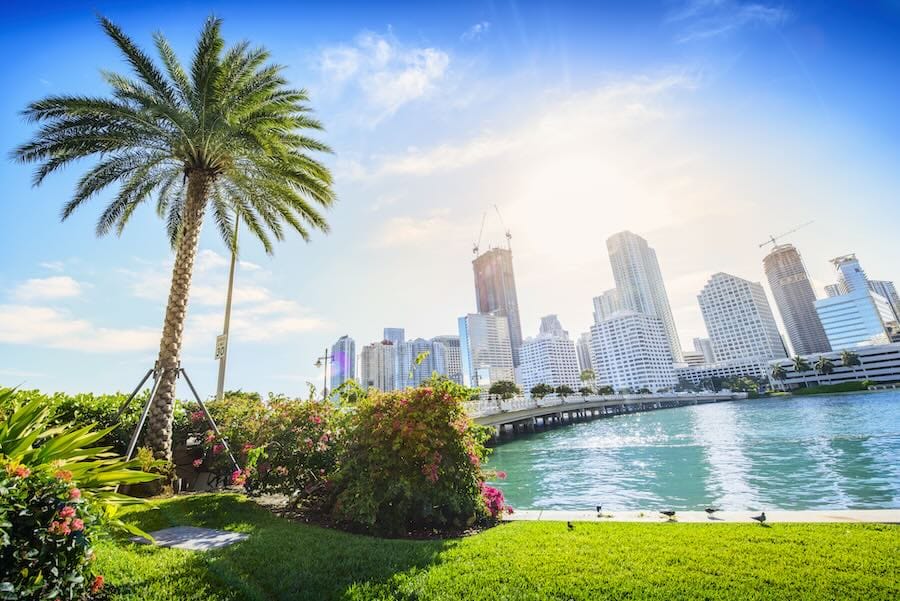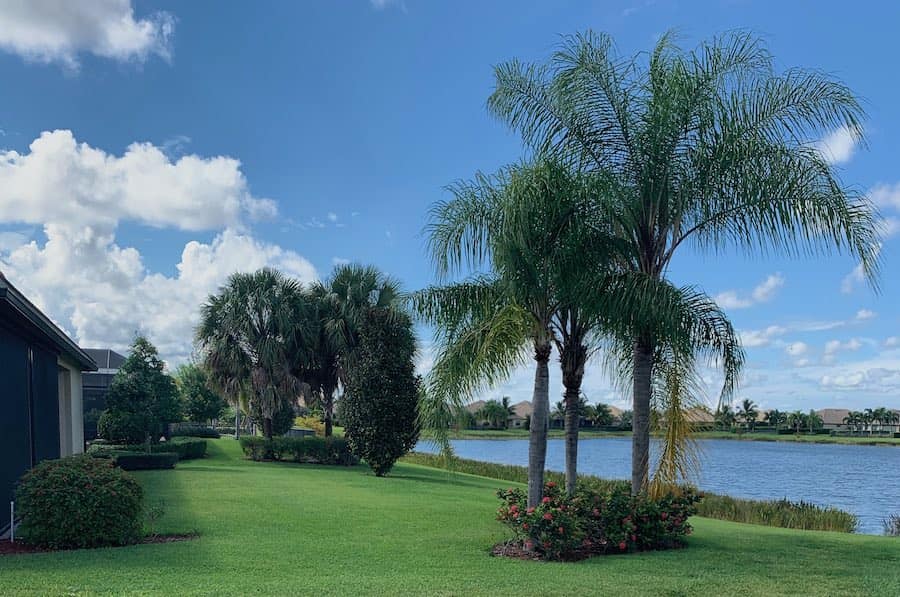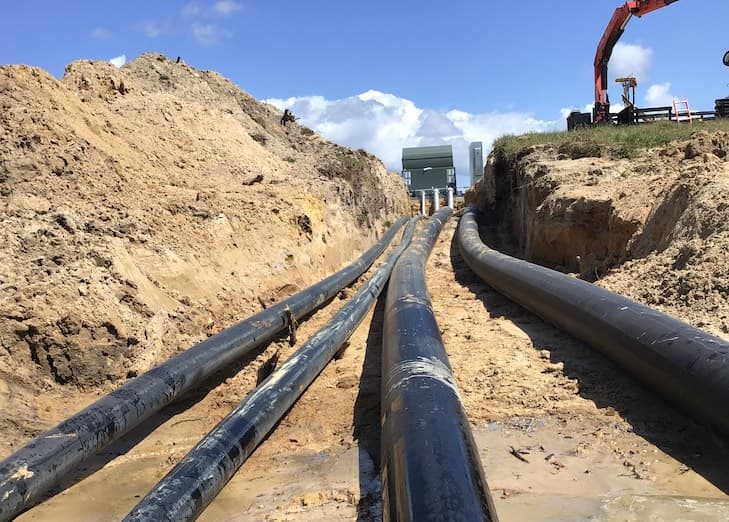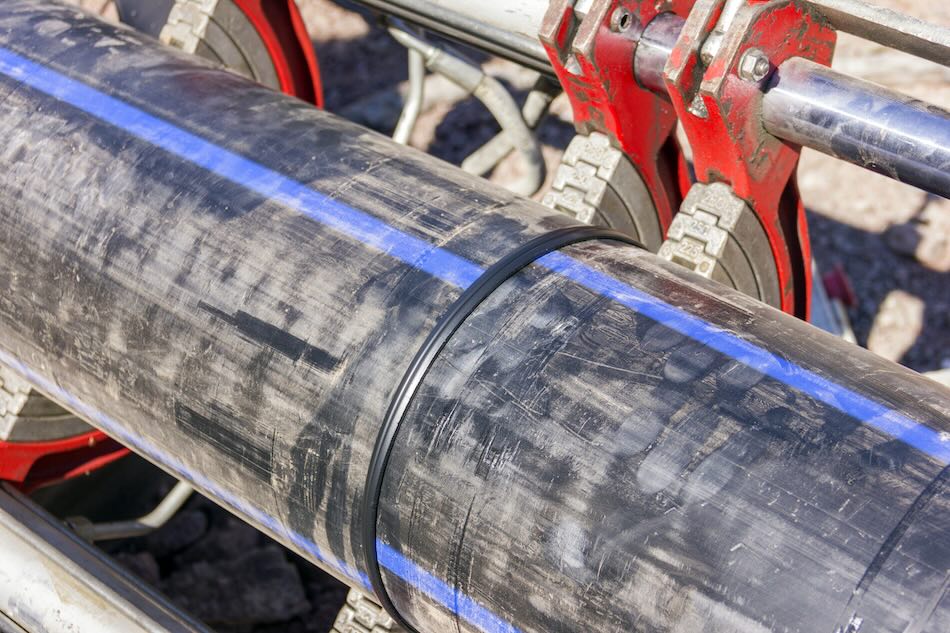
Updated 9 February 2024
Choosing the right kind of pipe for any irrigation project is as important as choosing the size and type of pump, the design of the pump station, control system(s), and even the source of water. In simple terms, the pipe will need to be not only durable but light weight and flexible.

The longer the pipe you install can stay in place without succumbing to leaks and splits from excessive movement is a vital consideration; with more hard-wearing pipe, repair bills will be lower and the system more efficient and dependable. In simple terms, anyone designing and installing an irrigation system needs to decide whether they want to use lines made of polyvinyl chloride (PVC) or high-density polyethylene (HDPE). The answer to this question will be dictated, in large part, by the specifics of the irrigation project, such as the source from which the water is being drawn and the size and complexity of the overall requirement. Because of this it’s useful to understand the different characteristics of each material in order to make an informed choice about the piping that's best suited to a particular installation.
Before detailing the features which differentiate HDPE and PVC it’s probably worth pointing out the properties that both materials have in common. In brief, both materials are lightweight and corrosion proof, both are a form of plastic made from petrochemicals, and both are resistant to the buildup of bacteria and chemicals. In terms of irrigation projects, the main advantage offered by both PVC and HDPE piping is that it has a higher life expectancy than traditional solutions such as iron, copper, and steel.
Although both types of piping are more durable in the long term than traditional metal pipes, there is some difference between the two. Studies have shown that PVC has a failure rating of one in 48,650 events, compared to the failure rating of HDPE, which is one in 10,000,000. In irrigation settings, failure events of this kind would generally occur because of low or high temperatures, or fluctuations in the water pressure being applied through the piping.
The fact that HDPE is much more resistant to the damaging impact of the sun’s UV rays than PVC makes it a much safer choice in a climate like Florida's for example, where extremely strong sunlight is a feature throughout several months of the year.

The greater ability of HDPE to cope with incidents and issues of this kind make it the better choice for long term irrigation projects, whereas the ease and simplicity with which PVC piping can be installed may make it the better choice for smaller projects which need to be completed at speed.

There are two ways of looking at the differences between the installation techniques required when using HDPE and PVC piping. Before examining these different viewpoints, it’s probably useful to outline exactly what those techniques are:

As stated, there are two ways of looking at this contrast. The first is to be glad that PVC piping can be installed much more quickly by any competent technician, and in any weather conditions; factors which will cut the cost of an installation and the time it takes to deliver. The other point of view, however, is that the certification needed to install and attach HDPE piping guarantees, at the very least, a basic level of competence and expertise. In addition to this, any joins in HDPE piping created through heat fusing are always going to be stronger and more durable than the PVC joins created using glue or gaskets.
PVC is the stronger and stiffer of the two materials, but the extra flexibility of HDPE makes it a better choice for projects which require a sharper bending radius in places. The rigidity of PVC makes it easier to connect to some other parts of the irrigation system such as valves and pumps, but it is at these connection points where leaks are most likely to occur. The connections and fittings on HDPE piping, thanks to the heat fusing method of attachment, are far more likely to create a leak-free system, since the heat-fused joints are actually even stronger than the piping itself. The relative lack of flexibility inherent in PVC piping means that the body of the pipe is at higher risk of cracking and breaking if it is placed under stress, for example, with the rise and fall of the water source in which it's located or from earth movements caused by heavy machinery for example.
If the piping in question is being used to facilitate a suction line then there are some differences in the operation of the suction line which may impact on the wider efficiency of the irrigation system from the source, to the irrigation pump station and onwards. An HDPE suction line, for example, is designed to float slightly above the bed of any lake or pond in which it is located. This position is important as it removes much of the risk of foreign materials or debris entering the system and causing damage.
When PVC is used, on the other hand, the intake screen assembly could settle onto the bed of the lake or pond, leading to poor performance across the pump system. The less durable nature of PVC means that small air leaks are also more likely to occur, leading to a system shut down while they are located and repaired.
Beyond the realm of irrigation systems, the versatility of HDPE pipes has made them the obvious choice for a wide range of applications. The fact that they combine low weight with a high resistance to corrosion makes them suitable for a diverse range of applications in sectors such as gas distribution, sewer systems, geothermal systems and mining, and one of the things underpinning this versatility is the fact that HDPE is extremely resistant to reaction or degradation when coming into contact with chemicals.

A report in World Pipelines in December 2023 published figures stating that the global market for HDPE pipes is expected to grow at a rate of 5.1% CAGR between 2023 and 2032, rising from a market size of $20.82 billion in 2022 to $31.46 billion in 2024. One of the main drivers of this growth is predicted to be the widespread use of HDPE pipes in surface water removal (SWR) drainage systems. In simple terms, this means the removal of storm water and excess rainfall. One of the impacts of a changing climate is the combination of rising sea levels and an increase in the number and severity of extreme weather events. More than virtually any other part of the US, Florida is impacted by both of these issues, with a 2023 study naming Miami Beach as the part of the country threatened most severely by flooding, with 39,547 homes estimated to be at risk of flooding by the year 2060.
In addition, of the 15 most at risk cities in the US, seven are located in Florida, including Boca Ciega, Key West and Ponte Vedra. As well as flagging up the degree to which HDPE pipes are likely to play a role in helping to mitigate the impact of extreme weather events and flooding in Florida, figures of this kind lead us to another of the ways in which HDPE and PVC pipes can be compared, and that is with regard to their respective environmental impact.
From golf courses, to housing developments to commercial projects, anyone installing a large scale irrigation system in Florida in the future – or upgrading an existing system – will have to take the environmental impact of the materials used into account for two reasons. The first is that lessening the carbon footprint of a project is intrinsically beneficial to the wider environment, particularly in a place like Florida which is particularly vulnerable to the impacts of changing climate and extreme weather events.. The second reason is applicable to large scale irrigation systems for golf courses, shopping malls, sports arenas and other businesses; it is that being able to flag up and demonstrate a commitment to lowering the carbon footprint of a business is becoming something which consumers increasingly demand.

The 2023 Buying Green Report included the following statistics highlighting the fact that US consumers, despite living through an era of rising prices, are willing to pay more for products which promote sustainability:
What statistics of this kind underline is that the relative eco-credentials of PVC and HDPE will come to play an increasingly important role in informing the choice of which material to use across an irrigation system. A paper published at the 7th International Conference on Energy and Environment Research in 2020 set out to compare the carbon footprint of a range of materials, including PVC and HDPE. Amongst the findings of the paper was the fact that PVC was found to use more energy in manufacture and generate more carbon emissions that other options such as HDPE.
There have also been concerns expressed in some quarters about the degree to which PVC pipes ‘leak’ potentially dangerous chemicals into the water they are carrying. While concerns of this kind may seem to apply mainly to PVC pipes used for the supply of drinking water, anything which fuels doubts about the safety and environmental impact of a material will probably come to play an increasingly impactful role in the specification process.